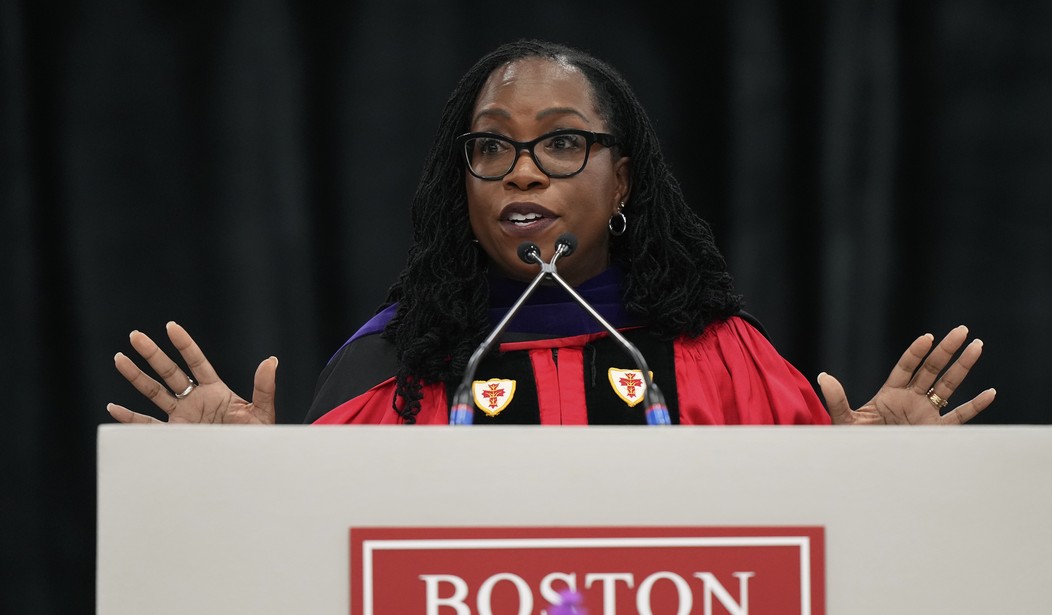In her dissent from the ruling outlawing affirmative action in college admissions, Justice Ketanji Brown Jackson made a blunder. She parroted a debunked claim that the chance of survival of a high-risk black newborn nearly doubles if under the care of a black physician. I suppose we shouldn’t hold that against her since she gave us fair warning that she's not a biologist. No, she’s just a simple Supreme Court Justice after all.
Conservative commentators are raking Jackson over the coals for the error. This is understandable when, as lawyer Ted Frank suggests, “[a] moment’s thought should be enough to realize that this claim is wildly implausible.” Indeed, Jackson’s statement would be big, if true, to my Vietnamese wife who was a neonatal intensive care unit nurse for years.
She and her colleagues, including nurses and doctors of every color, regularly impressed me with their skill and passion in saving little lives of every race every day doing things like starting IVs in the heads and feet of one-pound neonates. They are the fighter pilots of the nursing profession.
So, what gives? Queue the “diversity hire” explanation.
When Justice Stephen Breyer announced his retirement from the Supreme Court last year, President Biden proclaimed regarding the nomination of a replacement that he “had made no decision except one: the person I nominate will be…the first black woman ever nominated to the United States Supreme Court.” There are no clearer examples of hiring at the highest levels of government on the basis of race and sex than that.
The leftwing commentariat and press—but I repeat myself—tripped over themselves running to praise Biden for his announcement and for later following through with it. Equal opportunity activists argued against it explaining that people should be judged on merit and character not skin color or sex. Moreover, we explained, whoever is chosen will always be stigmatized as having been underqualified or lesser. So, here we are, thanks to President Biden, facing that very reality in just the first term of a Supreme Court Justice who could serve for the next 30 years.
Recommended
However, I don’t think the diversity hire fact is the full story or really even a big part of it. Sure, if Justice Elena Kagan had, for example, made the same mistake, she is unlikely to have been sneered at as lesser. But, by nearly any measure, Jackson is highly qualified. She is just as astute as any of her colleagues. Her problem is not her brains but her vision—specifically, tunnel vision.
In the same opinion, Justice Thomas took Jackson to task for what he called her “race-infused world view [that] falls flat at each step.” There is a fundamental disagreement between these two about how our country works (or doesn’t work) regarding race and equality. Jackson believes, according to Thomas, that “almost all of life’s outcomes may be unhesitatingly ascribed to race.” Jackson’s principal error was the result of being blinded by her desire to find support—any support—for her conclusion that race affects everything.
This reflects a longstanding bipartisan criticism that many judges are not, as Chief Justice John Roberts said of their job, simply calling balls and strikes. Instead, they have made up their minds on issues and merely seek support for those conclusions when cases come before them. Rather than saying what the law is, they are activists saying what they would like the law to be. They are in the game, pitching and batting. A highly accomplished lawyer at the pinnacle of the profession making such a painfully obvious blunder is a prime example of the phenomenon.
Fortunately, for the preservation of our American principle of equality under law, Jackson’s radical perspective of a “black and white world (literally),” as Thomas calls it, did not win the day. Yet this is a terrible blot on the record of the first black woman to serve on the Supreme Court of the United States.



















Join the conversation as a VIP Member